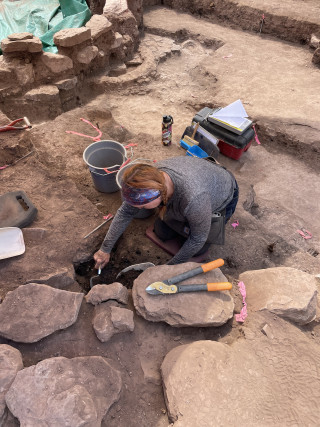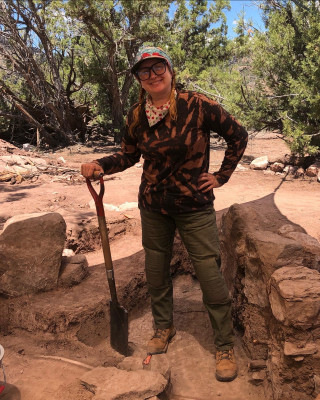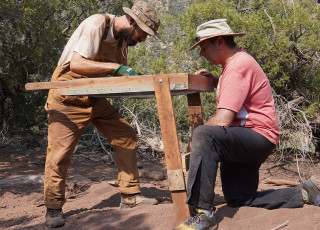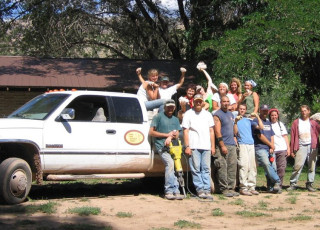Foundational Findings: Unveiling the Untold Stories of Utah's Range Creek Canyon
By Cosette Reeves
Archaeology is a discipline used to uncover and voice the millions of untold stories of the individuals, families, and communities that walked before us. From excavating ancient structures to reconstructing past human behavior through a series of subsistence experiments, archaeology is a labor-intensive field—and an important one—deepening our understanding of the constraints past humans faced and the implications of our changing world. As NHMU’s archaeologists, along with the help of several university students, are diligently working to do just that, they are beginning to unveil something big right here in Utah.
An incredibly well-protected record of past human occupation located primarily on SITLA and BLM lands, Range Creek Canyon houses hundreds of prehistoric archaeological sites. It wasn’t until 2002, when privately owned land located in the canyon was sold to the State of Utah, that archaeologists from the University of Utah were invited to survey areas of the region. NHMU’s former Chief Curator and former Director of the Range Creek Field Station, Dr. Duncan Metcalfe, called in a crew of graduate students—including Corinne Springer, Shannon Boomgarden, and Joel Boomgarden—to assist his colleague, Jerry Spangler, and his team in conducting archaeological surveys during the land transfer. In just the first two weeks alone, 87 sites were recorded, sparking renewed interest in the area. Inspired by its potential, Dr. Metcalfe established the Range Creek Field Station, which enables extended research in this unique setting. Following this, in 2003, the first archaeological summer field school was taught in Range Creek Canyon, giving students the opportunity to gain hands-on, practical experience before moving on to the next step in their careers. The field school has continued every year since with the help of the current Director of the Range Creek Field Station, Dr. Shannon Boomgarden, and the Site Manager (and resident archaeologist), Corinne Springer.
Since the Museum’s involvement, a total of around 510 archaeological sites have been recorded in the area—the majority associated with the people of the Fremont period—yet one of the most interesting stories may, just now, be unfolding.

Dr. Shannon Boomgarden excavating in Range Creek.
Dr. Boomgarden and her team have been excavating a trench at the site referred to as Big Village since 2011, unearthing a complex sequence of Fremont structures stacked atop one another that have been radiocarbon dated to approximately 1,000 years ago. This site has yielded a cornucopia of artifacts and architectural features over the years, many of which resemble those found at other surrounding Fremont sites. However, this year’s excavation season has exposed something novel, setting the stage for new questions and intriguing answers that are bound to follow.
Two particularly surprising finds suggest a possible connection to the Ancestral Puebloans (formerly known as the Anasazi). The first is a second hearth—a feature not typically seen in Fremont architecture—which is filled with an unusual sediment not found nearby and located less than a foot away from the very common, single central hearth. The second find is the emergence of what appears to be a large, square-shaped, coursed rock wall bounding the hearths, distinct from the typical round pit house-style dwellings associated with the Fremont architecture already uncovered in Range Creek Canyon. Dr. Boomgarden’s initial inquiries suggest that this square-like construction aligns more closely with above-ground, Puebloan architectural styles, hinting at a cultural influence previously undocumented in the canyon.
The presence of such architecture here suggests the movement of people northward from the cultural epicenter of the Puebloans further south. Further investigations will reveal more about these connections. These findings could add to our understanding of ancient cultural interactions between Indigenous groups in the region and fill in gaps in the narrative of these ancient people’s movements.
By next year, Dr. Boomgarden plans to conduct further excavations to confirm the final shape and size of this mysterious residential structure, aiming to compare features from Big Village to similar structures excavated outside Range Creek Canyon and shed new light on the extent of cross-cultural influence in this sector of the Southwest.





